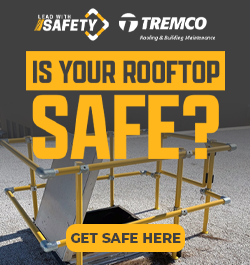Which Type of Solar Panel is Best for Your Home?

By Cass Jacoby.
Should you choose monocrystalline or polycrystalline? We compared the two to help you make the best choice for your home.
Did you know that there are different kinds of solar panels? That’s right, when it comes to solar power not all panels are created equal. Choosing between a monocrystalline or polycrystalline solar panel is a big step in the planning process, so how do you decide which is right for your home?
Read on to learn the similarities and differences between these two types of solar panels to better determine which is the best choice for your solar installation.
What does monocrystalline and polycrystalline mean?
Monocrystalline and polycrystalline are the two most common types of solar energy receptors. All solar panels consist of silicon solar cells. The silicon is made when a silicon seed is placed in a vat of molten silicon. The main difference between solar panels is the type of silicon cell they use. Both convert sunlight into electricity, however the silicon structure of each type of individual solar cell can affect performance and appearance.
While both work by using photovoltaic (PV) cells made of silicon, the difference between the two is the configuration of the silicon. Monocrystalline solar panels have solar PV cells made from a single silicon crystal. Alternatively, polycrystalline solar panels are made up of multiple silicon crystal fragments that are melded together during manufacturing.
Monocrystalline solar panels
Monocrystalline solar panels have a higher conversion efficiency than polycrystalline panels. According to Forbes, monocrystalline solar panels typically have an efficiency range of 15% to 20%, with some newer experimental models even reaching close to 50%. Monocrystalline panels produce more kilowatt hours of electricity, making them a good choice for roofs with limited space as the panels will be more productive per square foot. Because these panels require a complex manufacturing process for their single crystal silicon cells, they are the most expensive.
Pros
-
Highly efficient at producing energy
-
Panels require less space
-
Sleeker and more aesthetically pleasing
-
Better heat tolerance
Cons
-
Expensive
-
Less sustainable production methods
Polycrystalline solar panels
Polycrystalline solar panels have a lower efficiency compared with monocrystalline cells, EcoWatch reports “as of 2021, polycrystalline panels have typical efficiencies below 20%, while the best monocrystalline panels are approaching 23%. However, polycrystalline panels also come at a lower price and have a comparable durability and longevity to the monocrystalline module.”
Further, solar panel efficiency is not a critical factor when you have plenty of space available. Kathie Zipp with Solar Panel World online states that polycrystalline is an inexpensive way to put together a solar system, making solar power available for those who can’t afford monocrystalline cells.
Pros
-
Less expensive than monocrystalline panels
-
Lifespan comparable to that of monocrystalline panels yet at a lower cost
Cons
-
Panels require more space
-
Less efficient at producing energy
-
Less sustainable production
-
The bluish color stands out more than the black of the polycrystalline panels
-
Less heat tolerance
Monocrystalline or polycrystalline: Which is best for you?
Each type of solar panel comes with advantages and disadvantages, and you can get an excellent return on investment with both. Energy Sage says the choice comes down to your personal preference, space constraints and the best financing option for you. To make the best choice for your home, consider these factors:
Appearance. Monocrystalline panels are black, while polycrystalline panels are blue. If you prefer one color over the other it can help you choose which is best for your home.
Space. Monocrystalline panels offer more watts per square foot, if your home only has so much roof space to dedicate to solar power, then this type of solar panel might be better suited to your home.
Budget and financing. Polycrystalline solar panels are more affordable. However, if you have a solar loan with favorable interest rates, you may be able to finance your solar installation and pay the loan off with the money you save on utility bills, making the extra cost of monocrystalline panels a non-issue.
Further, it could be the case that once other system components and costs are calculated, a completed installation with monocrystalline panels is actually cheaper, even if a single panel costs more. Make sure to compare solar quotes and understand your financing options when making your choice, as different factors can affect the overall cost of installation.
Conclusion
Ultimately, either choice of solar panel is going to help you save money on energy. The best choice for your home will be dependent on what you want out of your solar installation.
Have a question? AskARoofer.
Find your local roofing contractor in the RoofersCoffeeShop® Contractor Directory.
About Cass
Cass works as a reporter/writer for RoofersCoffeeShop and AskARoofer. When she isn’t writing about roofs, she is writing about movies for her master's degree and dancing with her plants.
Photo credit: Nerthuz / iStock / Getty Images













Comments
Leave a Reply
Have an account? Login to leave a comment!
Sign In